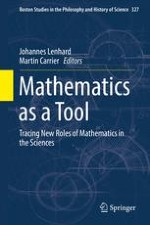2017 | OriginalPaper | Buchkapitel
The Vindication of Computer Simulations
verfasst von : Nicolas Fillion
Erschienen in: Mathematics as a Tool
Aktivieren Sie unsere intelligente Suche, um passende Fachinhalte oder Patente zu finden.
Wählen Sie Textabschnitte aus um mit Künstlicher Intelligenz passenden Patente zu finden. powered by
Markieren Sie Textabschnitte, um KI-gestützt weitere passende Inhalte zu finden. powered by
